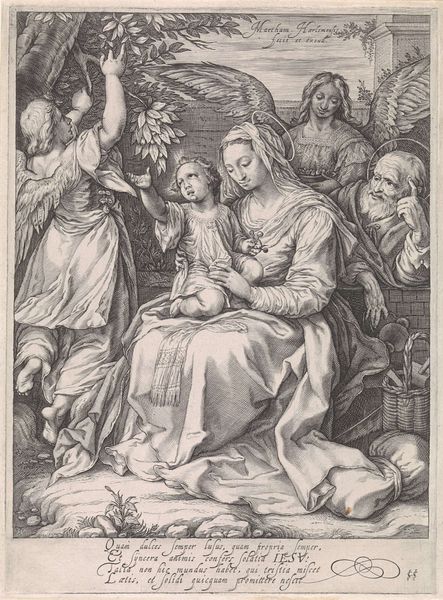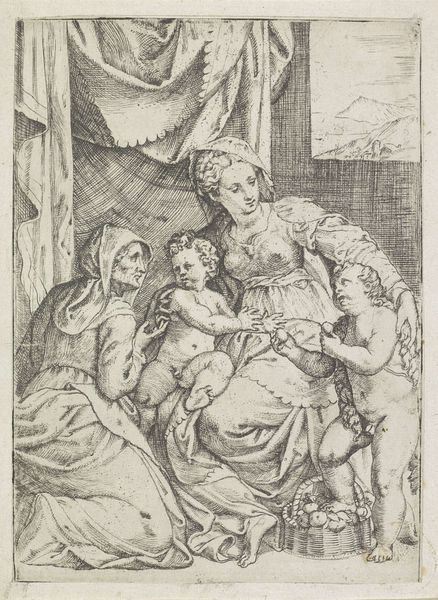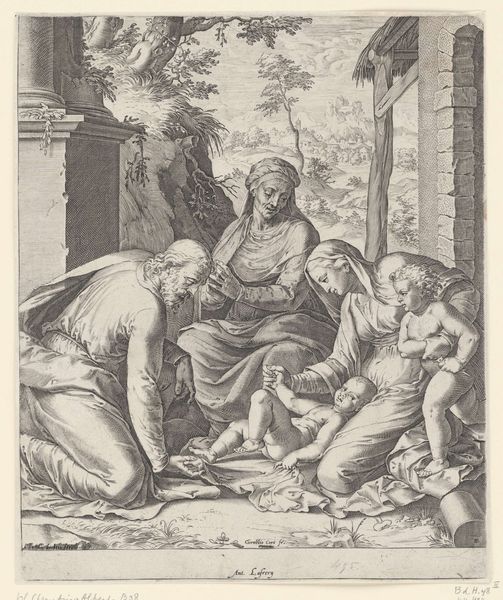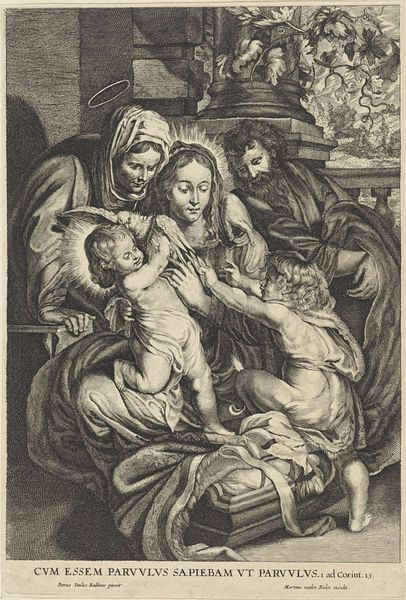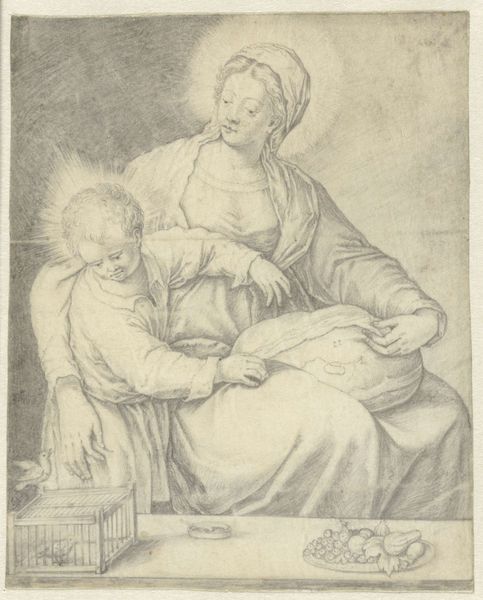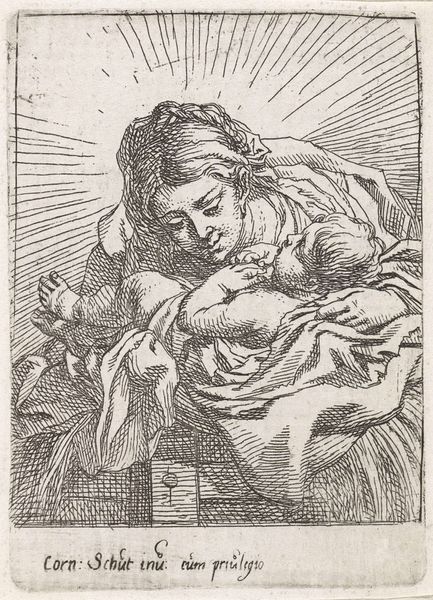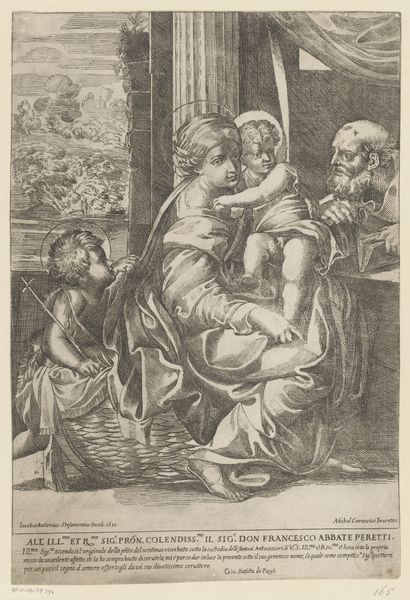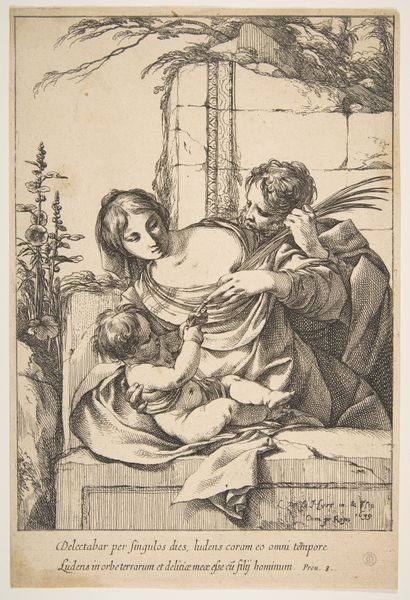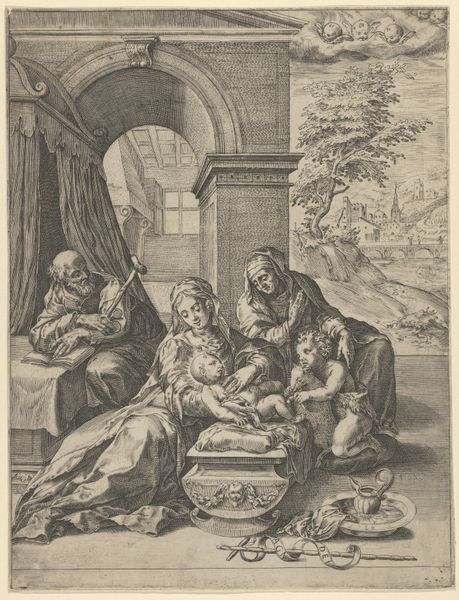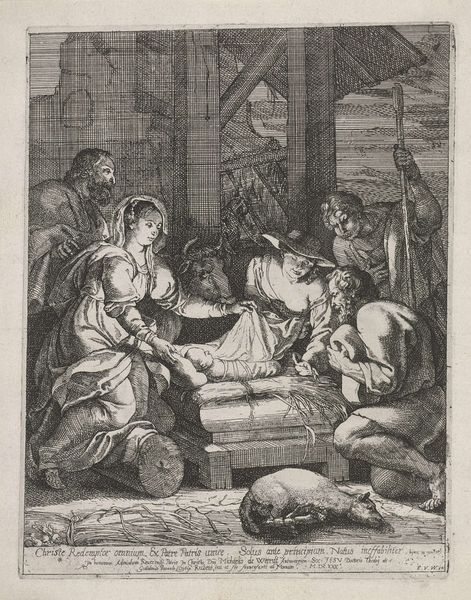
print, engraving
#
portrait
# print
#
figuration
#
history-painting
#
northern-renaissance
#
engraving
Dimensions: height 175 mm, width 120 mm
Copyright: Rijks Museum: Open Domain
Curator: This print, currently held in the Rijksmuseum collection, is entitled "Maria met kind en twee engelen," which translates to "Mary with Child and Two Angels." Jacob Matham created it in 1599, employing the engraving technique. Editor: The sheer density of detail grabs me immediately. It’s intricate, but almost unsettling. It’s like peeking into a world that is very meticulously created, but strangely airless. Does that make sense? Curator: It does, and it speaks to the Northern Renaissance style which emphasizes meticulous detail and often a degree of emotional restraint, while maintaining deep spiritual symbolism. Consider, for example, Mary’s downward gaze—it symbolizes humility and acceptance of her divine role. Notice how both angels adopt similar poses. Editor: Right, that mirrored pose feels purposeful—a doubling of reverence, perhaps? And what about the architectural forms, do they give you the sense of almost pressing inward, framing and compressing the scene. It’s less open, somehow, less… joyful than I might expect. Curator: That’s perceptive. The architectural forms, while structurally sound, contribute to a closed space, reflective of the enclosed garden or 'hortus conclusus,' which is a Marian symbol of purity and protection. The compressed space heightens the intimacy and devotion of the scene. And the Latin script reinforces its theological nature. Editor: I guess, looking at the material constraints, it is difficult to convey "openness" or "airiness" through an engraving, right? It demands sharp, clear lines, controlled darkness. Still, I’m intrigued by how the artist worked within those constraints to evoke such a particular emotional register: carefulness, intimacy, perhaps also just a little… pensiveness. Curator: Precisely. Matham manages to imbue the image with both the stylistic characteristics of his era and a particular psychological depth. The symbols speak not only to doctrine but also to individual piety. Editor: Seeing the subtle details through your interpretation…it reveals just how much quiet power exists in this work. What I had initially interpreted as simply formal and dense feels rich with devotional feeling. Thanks for clarifying this somewhat strange composition to my senses.
Comments
No comments
Be the first to comment and join the conversation on the ultimate creative platform.
